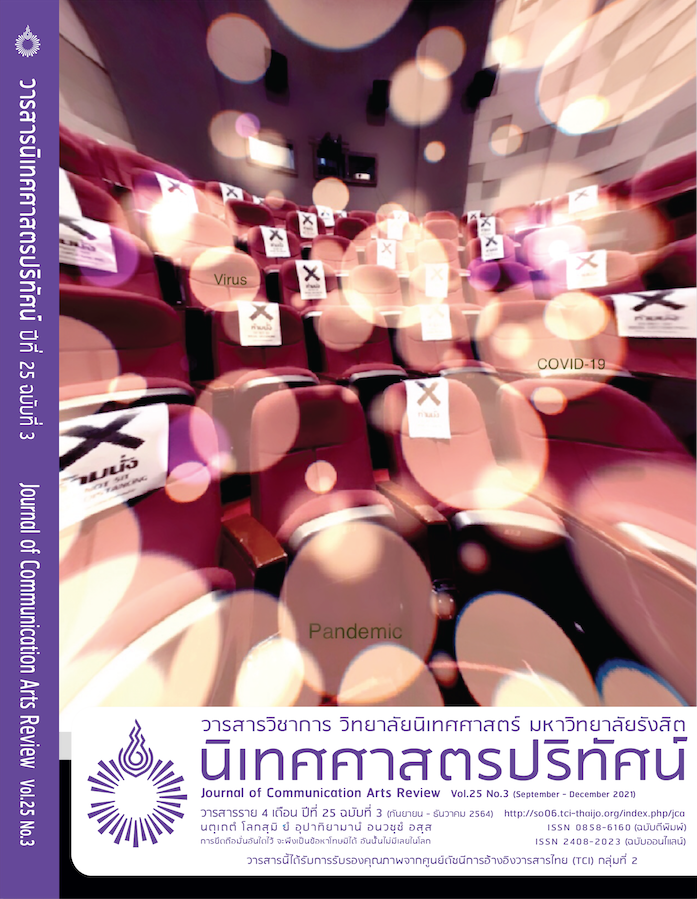Consumers Behavior, Satisfaction, and Utilization of Using the GET Food Application by Undergraduate Students of Kasem Bundit University
Abstract
The objective of this research was to study the consumers’ behavior in services, satisfaction, and utilization of the GET Food application through data analysis collected from a questionnaire completed by 400KasemBundit University undergraduate students, by way of descriptive statistics.
The majority of the GET Food service users are women between the ages of 20 and 21 years with an average income between THB 8,000 to 12,000 per month. Most of these service users, or 65.7 percent of them, reside in off-campus dormitories where sharing their room with others. Apart from using the GET Food application, many of them ordered food via a number of applications such as Grab Foodat 38.5 percent, LINE MAN at 36.8 percent, andfoodpandaat 29.0 percent respectively.Considering the factors affecting the choices of restaurants offered by the GET Food application, 64.5 percent of the service users choose restaurants with interesting promotions, 46.5 percent choose restaurants which are popular, and 44.3 percent choose restaurants located near their residences or offices. The most popular food is Thai food at 57.0 percent, the second most popular is street food at 56.3percent, and the third most popular is Japanese food at 49.0 percent.Additionally, the study found that the sources that led most of the service users to get to know the GET Food application are through introductions from family, friends, and acquaintances at 46.8 percent, through television media at 45.3 percent, and through media which are placed on moving vehicles such as buses, electric trains, and tour buses at 41.8 percent respectively.
About the satisfaction on all aspects of services rendered through using the GET Food application to be very satisfactory. The area with the most satisfactory result is the service rendered by the staff of GET Food, in particular, the quality of service by the delivery staff which is at an average of 4.03 points out of atotal of 5.00 points. Secondly, for the cost in relation to the service, the service users opine that the most satisfactory cost is the cost-efficiency of the delivery service which is at an average of 4.02 points. The efficiency of the application comes out at an average of 4.00 points,where the reliability of the application earns most satisfaction. The quality of food receives an average of 3.93 points.
Considering the benefits obtained from ordering food from the GET Foodapplication, the study found that it has brought a number of benefits to the service users. Most of the service users at 64.3 percent view that ordering food via the GET Food application can be used as a guideline for running a business. Apart from that, 61.3 percent of the respondents view that ordering food through the GET Food application has provided them with more time to spend on other activities, while 59.0 percent of the respondents think that this has improved their relationships with people surrounding them.The diversity in food choices is reported as a benefit to 52.0 percent.Furthermore, 92.3 percent of the service users highly recommend others to use the services of the GET Food application for their comfort and convenience, diverse choices of restaurants, reliability in services, user friendliness and uncomplicated application, including various special promotions, fair service fees, etc. Only a minority of the respondents at 7.8 percent would never recommend this application for the reason that there are other applications which are more user-friendly and have more choices of food. They feel unsafe to use their own personal telephone number in communicating.
The service users give some recommendations for the improvement of GET Food application to ensure its sustainability under current intense competition.These recommendations include: a) adding more and diverse choices of food; b) expansion of the area of services; c) introduction of interesting promotion activities by using easy-to-read fonts; d) grouping of foods; e) improving the application to be more user-friendly; f) using real photos of foods; g) regularly improving and updating the locations; and, h) setting a priority of customers preferences. Additionally, service standards quality of both food delivery staff and order taking staff must be improved in terms of the accuracy of data, speedy service, discipline observation, mapped food delivery, food arrangement, etc.
References
กาญจนา แก้วเทพ. (2547). สื่อสารมวลชน : ทฤษฎีและแนวทางการศึกษา. กรุงเทพฯ : สำนักพิมพ์เลิฟ แอนด์ ลิฟ.
เกตุวดี สมบูร์ทวี. (2561). ปัจจยัด้านคุณภาพการบริการที่มีอิทธิพลต่อการตัดสินใจซื้อซ้ำผลิตภัณฑ์อาหารผ่านผู้ให้บริการ “Food Panda Application. วารสารการจัดการสมัยใหม่. 16 (1): 153-162. สืบค้นจาก file:///C:/ Users/ asus/ Downloads/134536-Article%20Text-356146-1-10-20180715.pdf.
ฉัฐมณฑน์ ตั้งกิจถาวร. (2557). การใช้ประโยชน์และความพึงพอใจในการเปิดรับข้อมูลที่ถูกแชร์ (Shared) ผ่านเฟสบุ๊ค.หลักสูตรนิเทศศาสตรมหาบัณฑิตสาขาวิชาการสื่อสารเชิงกลยุทธ์มหาวิทยาลัยกรุงเทพ. สืบค้นจาก http://dspace.bu.ac.th/jspui/bitstream/123456789/1635/1/chattamon_tang.pdf.
ชเนศ ลักษณ์พันธุ์ภักดี. (2560). ปัจจัยที่มีอิทธิพลต่อการตัดสินใจใช้บริการสั่งอาหารแบบเดลิเวอรี่ผ่านสื่ออิเล็กทรอนิกส์ในเขตกรุงเทพมหานครและปริมณฑล.การค้นคว้าอิสระหลักสูตรบริหารธุรกิจมหาบัณฑิตคณะพาณิชยศาสตร์และการบัญชี มหาวิทยาลัยธรรมศาสตร์.
ณัฐรุจา พงศ์สุพัฒน์. (2561). การศึกษาตลาดแอปพลิเคชันอาหารและพฤติกรรมผู้บริโภคต่อการตัดสินใจเลือกใช้บริการแอปพลิเคชันอาหาร. การค้นคว้าอิสระบริหารธุรกิจมหาบัณฑิตคณะพาณิชยศาสตร์และการบัญชี มหาวิทยาลัยธรรมศาสตร์. สืบค้นจาก http://ethesisarchive.library.tu.ac.th/thesis/2018/TU_2018_6002030382_9907_9882.pdf.
ณัธภัชร เฉลิมแดน. (2563). พฤติกรรมผู้บริโภคในการสั่งอาหารแบบเดลิเวอรี่ผ่านโมบายแอปพลิเคชันช่วงเกิดโรคติดเชื้อไวรัสโคโรนาสายพันธุ์ใหม่ 2019 (COVID-19) ในเขตกรุงเทพมหานคร. วารสารบริหารธุรกิจอุตสาหกรรม. 2 (1) : 103.
ณิชยา ศรีสุชาต. (2560). พฤติกรรมของผบู้ริโภคที่ซื้อสินค้าอาหารผ่านแอปพลิเคชั่นโทรศัพท์มือถือในเขตกรุงเทพมหานคร. สืบค้นจาก http://www.wmsjournal.com/.
ตรีสุนันท์ อุปรมัย. (2560). ปัจจัยที่ส่งผลต่อการตัดสินใจใช้แอพพลิเคชั่นไลน์แมนสั่งอาหารของผู้บริโภคในเขตกรุงเทพมหานครและปริมณฑล.การค้นคว้าอิสระศิลปศาสตรมหาบัณพิต (นิเทศศาสตร์และนวัตกรรม) คณะนิเทศศาสตร์และนวัติกรรมการจัดการ สถาบันบัณฑิตพัฒนบริหารศาสตร์.
ธาวินี จันทร์คง.(2559). ปัจจัยที่มีผลต่อพฤติกรรมการใช้โมบายแอพในการสั่งอาหารของผู้บริโภคในเขตกรุงเทพมหานคร. การค้นคว้าอิสระบริหารธุรกิจมหาบัณฑิตมหาวิทยาลัยกรุงเทพ.
บุญชม ศรีสะอาด. (2553). การวิจัยเบื้องต้น. พิมพ์ครั้งที่ 8. กรุงเทพฯ:สุวีริยสาสน์.
ปรมะ สตะเวทิน. (2541). การสื่อสารมวลชน: กระบวนการสื่อสารและทฤษฎี. กรุงเทพฯ : ภาพพิมพ์.
พิรานันท์ แกล่งกล้า.(2562).การวิเคราะห์คุณลักษณะของบริการแอพลิเคชั่นเพื่ออการสั่งอาหารเดลิเวอรี่ในกรุงเทพมหานคร. การศึกษาค้นคว้าอิสระ บัณฑิตวิทยาลัย มหาวิทยาลัยเกษตรศาสตร์.
ศิริวรรณ เสรีรัตน์. (2550) พฤติกรรมผู้บริโภค. กรุงเทพฯ:ธีระฟิล์ม.
Daniel Belanche, Marta Flavian and Alfredo Perez-Rueda. (2020). Mobile Apps Use and WOM in the Food Delivery Sector: The Role of Planned Behavior, Perceived Security and Customer Lifestyle Compatibility. Retrieved from: https://www.researchgate.net/publication/341580993.
Yamanae,Taro. (1973). Statistics:An Introductory Analysis. 3rd ed. New York : Harper & Row Publichers,


